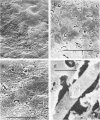Abstract
The microorganisms associated with the undiseased human colon wall were examined in material obtained from four sudden-death victims. In traffic accident subjects (aged 45 and 16 years) the anaerobe-aerobe ratio was about 104:1 in all areas of the colon examined, whereas in acute heart failure subjects (aged 74 and 46 years) the ratio was as low as 1.2:1. The flora of each individual was distinct and complex. Although the predominant anaerobes isolated were Bacteroides and Fusobacterium spp., which composed over 50% of the flora in some samples, the species isolated (indicated by morphology and glucose fermentation products) varied between individuals. Other major types observed were gram-positive nonsporing rods, including Bifidobacterium spp., and anaerobic cocci (between 8 and 20% of isolates). Clostridia were only isolated in significant numbers from one individual. Scanning electron microscopy showed that most of the organisms were present below the top surface of the mucin layer overlying the mucosa. The use of several different preparative procedures for microscopy showed a complex microbial structure within the mucus, but major variations in the bacterial populations in different areas of the colon were not found. Spiral-shaped organisms up to 60 μm long in the form of double helices were found in two subjects by scanning electron microscopy but were not isolated during the parallel bacteriological investigation. The differences between this and previous studies are discussed in relation to experimental procedures and also in contrast to results with animals that showed a particularly specialized flora associated with the colon wall.
Full text
PDF
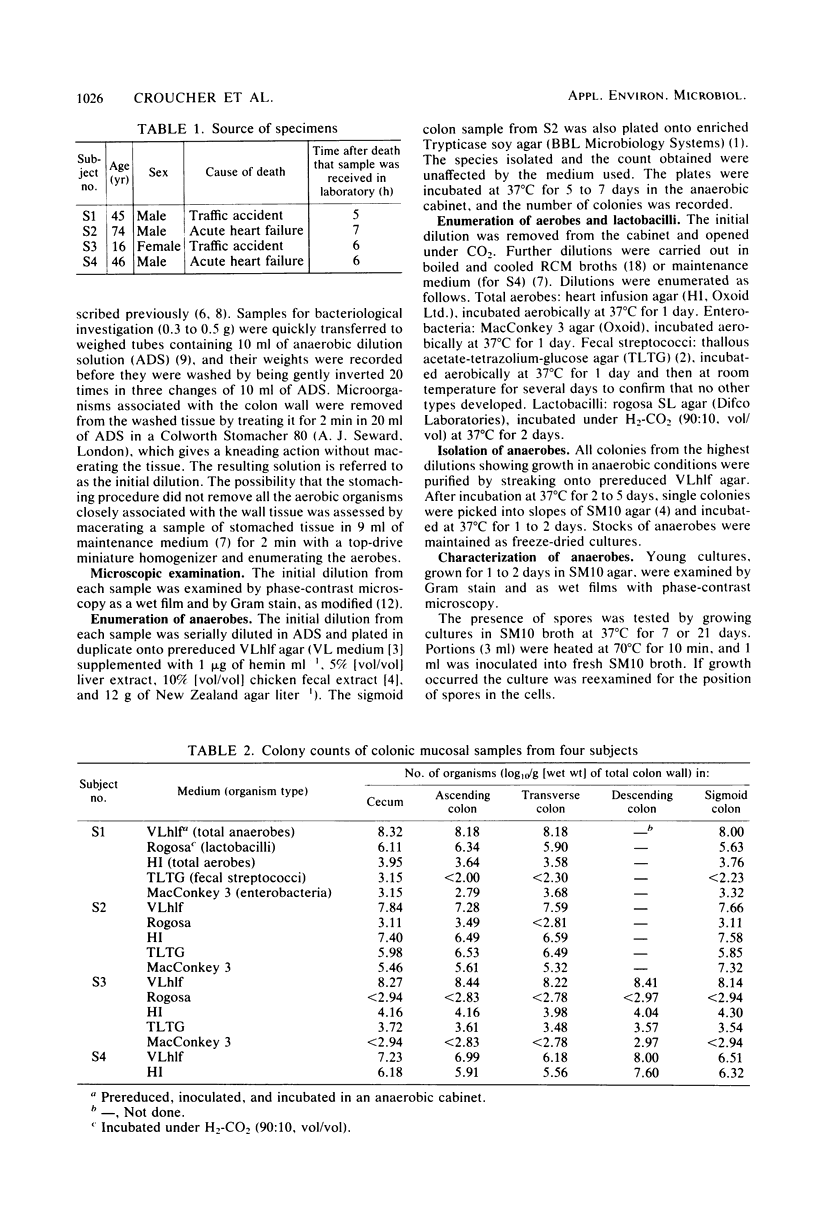


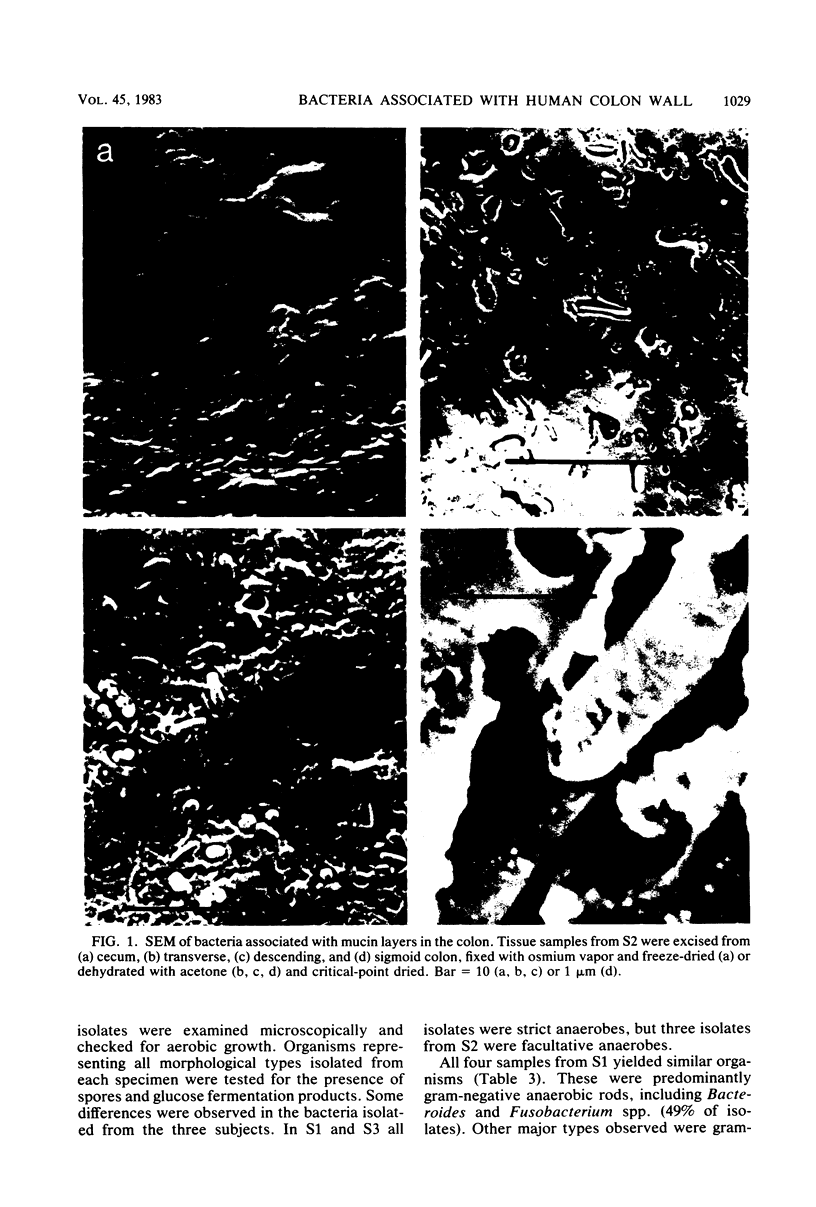
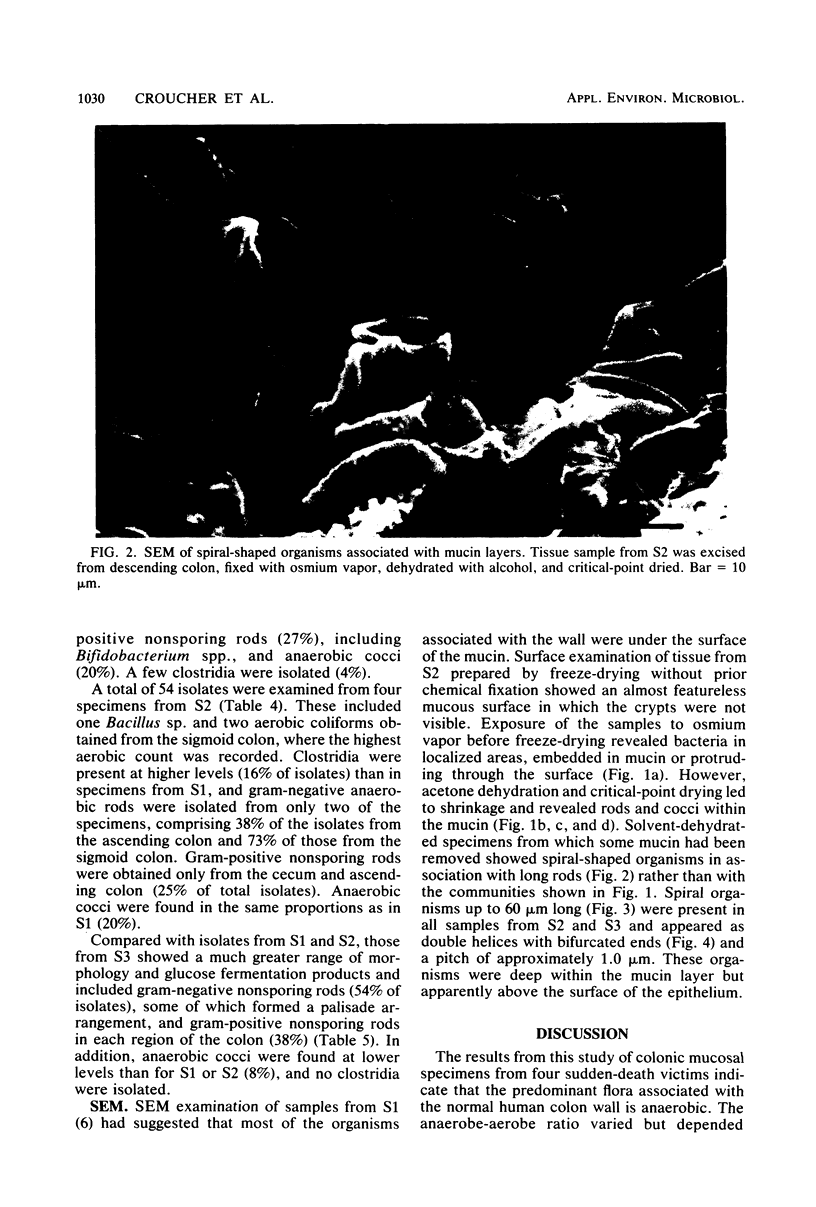

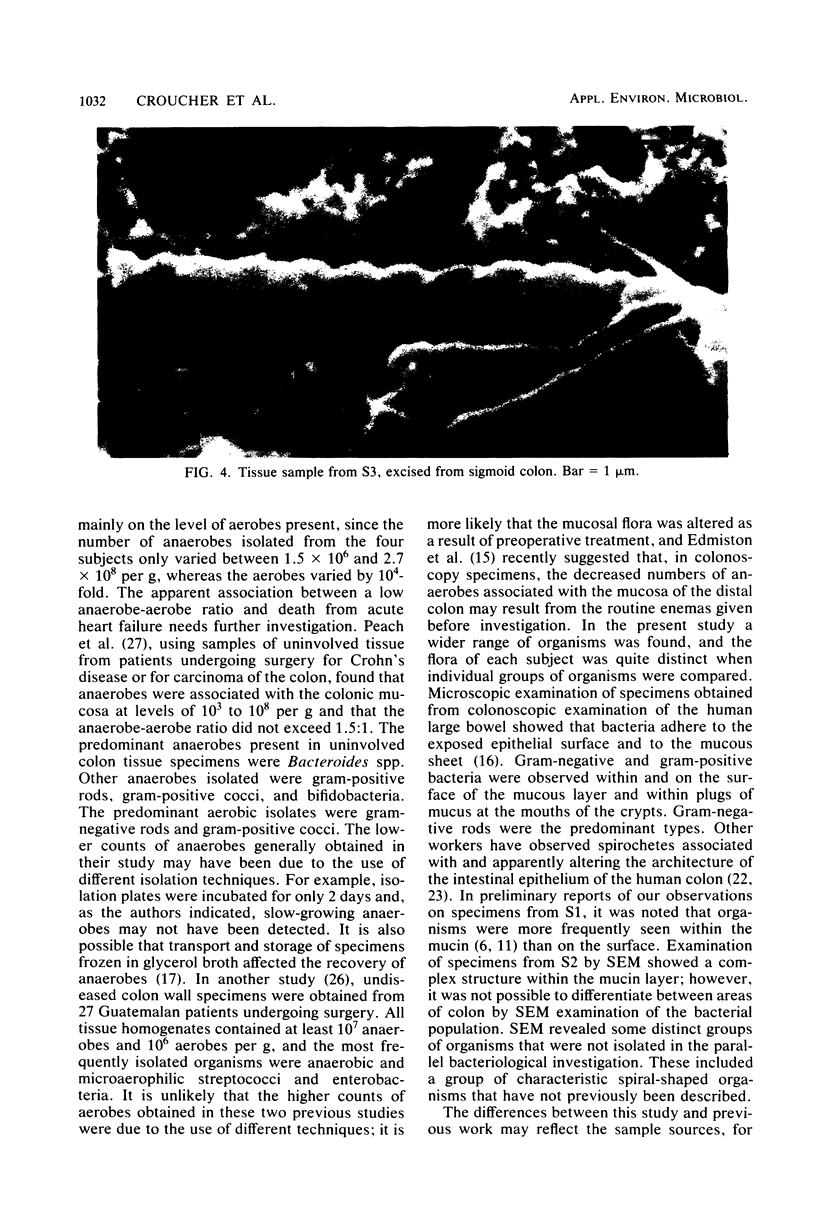

Images in this article
Selected References
These references are in PubMed. This may not be the complete list of references from this article.
- Arank A., Syed S. A., Kenney E. B., Freter R. Isolation of anaerobic bacteria from human gingiva and mouse cecum by means of a simplified glove box procedure. Appl Microbiol. 1969 Apr;17(4):568–576. doi: 10.1128/am.17.4.568-576.1969. [DOI] [PMC free article] [PubMed] [Google Scholar]
- Barnes E. M., Impey C. S. Anaerobic gram negative nonsporing bacteria from the caeca of poultry. J Appl Bacteriol. 1968 Dec;31(4):530–541. doi: 10.1111/j.1365-2672.1968.tb00402.x. [DOI] [PubMed] [Google Scholar]
- Barnes E. M., Impey C. S., Stevens B. J., Peel J. L. Streptococcus pleomorphus sp.nov.: an anaerobic streptococcus isolated mainly from the caeca of birds. J Gen Microbiol. 1977 Sep;102(1):45–53. doi: 10.1099/00221287-102-1-45. [DOI] [PubMed] [Google Scholar]
- Barnes E. M., Impey C. S. The occurence and properties of uric acid decomposing anaerobic bacteria in the avian caecum. J Appl Bacteriol. 1974 Sep;37(3):393–409. doi: 10.1111/j.1365-2672.1974.tb00455.x. [DOI] [PubMed] [Google Scholar]
- Bayliss C. E., Waites W. M. The effect of hydrogen peroxide and ultraviolet irradiation on non-sporing bacteria. J Appl Bacteriol. 1980 Jun;48(3):417–422. doi: 10.1111/j.1365-2672.1980.tb01030.x. [DOI] [PubMed] [Google Scholar]
- Cheng K. J., Irvin R. T., Costerton J. W. Autochthonous and pathogenic colonization of animal tissues by bacteria. Can J Microbiol. 1981 May;27(5):461–490. doi: 10.1139/m81-071. [DOI] [PubMed] [Google Scholar]
- DUBOS R., SCHAEDLER R. W., COSTELLO R., HOET P. INDIGENOUS, NORMAL, AND AUTOCHTHONOUS FLORA OF THE GASTROINTESTINAL TRACT. J Exp Med. 1965 Jul 1;122:67–76. doi: 10.1084/jem.122.1.67. [DOI] [PMC free article] [PubMed] [Google Scholar]
- Edmiston C. E., Jr, Avant G. R., Wilson F. A. Anaerobic bacterial populations on normal and diseased human biopsy tissue obtained at colonoscopy. Appl Environ Microbiol. 1982 May;43(5):1173–1181. doi: 10.1128/aem.43.5.1173-1181.1982. [DOI] [PMC free article] [PubMed] [Google Scholar]
- HUNGATE R. E. The anaerobic mesophilic cellulolytic bacteria. Bacteriol Rev. 1950 Mar;14(1):1–49. doi: 10.1128/br.14.1.1-49.1950. [DOI] [PMC free article] [PubMed] [Google Scholar]
- Hartley C. L., Neumann C. S., Richmond M. H. Adhesion of commensal bacteria to the large intestine wall in humans. Infect Immun. 1979 Jan;23(1):128–132. doi: 10.1128/iai.23.1.128-132.1979. [DOI] [PMC free article] [PubMed] [Google Scholar]
- Hedges A. R., Hedges K., Reddy B. S. Effect of freezing of human fecal specimens upon the isolation of nuclear dehydrogenating clostridia. Proc Soc Exp Biol Med. 1978 Jan;157(1):94–96. doi: 10.3181/00379727-157-39998. [DOI] [PubMed] [Google Scholar]
- Lee F. D., Kraszewski A., Gordon J., Howie J. G., McSeveney D., Harland W. A. Intestinal spirochaetosis. Gut. 1971 Feb;12(2):126–133. doi: 10.1136/gut.12.2.126. [DOI] [PMC free article] [PubMed] [Google Scholar]
- Moore W. E., Holdeman L. V. Human fecal flora: the normal flora of 20 Japanese-Hawaiians. Appl Microbiol. 1974 May;27(5):961–979. doi: 10.1128/am.27.5.961-979.1974. [DOI] [PMC free article] [PubMed] [Google Scholar]
- Nelson D. P., Mata L. J. Bacterial flora associated with the human gastrointestinal mucosa. Gastroenterology. 1970 Jan;58(1):56–61. [PubMed] [Google Scholar]
- Peach S., Lock M. R., Katz D., Todd I. P., Tabaqchali S. Mucosal-associated bacterial flora of the intestine in patients with Crohn's disease and in a control group. Gut. 1978 Nov;19(11):1034–1042. doi: 10.1136/gut.19.11.1034. [DOI] [PMC free article] [PubMed] [Google Scholar]
- Savage D. C. Associations of indigenous microorganisms with gastrointestinal mucosal epithelia. Am J Clin Nutr. 1970 Nov;23(11):1495–1501. doi: 10.1093/ajcn/23.11.1495. [DOI] [PubMed] [Google Scholar]
- Savage D. C. Localization of certain indigenous microorganisms on the ileal villi of rats. J Bacteriol. 1969 Mar;97(3):1505–1506. doi: 10.1128/jb.97.3.1505-1506.1969. [DOI] [PMC free article] [PubMed] [Google Scholar]



